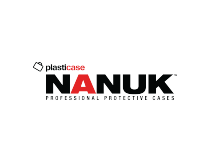Polyaspartic Coatings Market by Type, Systems, End-use Industry and Region - Global Forecast to 2025 - ResearchAndMarkets.com
The "Global Polyaspartic Coatings Market by Type (100% Solids Polyaspartic, Hybrid Polyaspartic), Systems (Quartz, Metallic), End-use Industry (Building & Construction, Transportation, Industrial, Power Generation, Landscape) and Region - Forecast to 2025" report has been added to ResearchAndMarkets.com's offering.
The global polyaspartic coatings market is estimated at USD 329 million in 2020 and is projected to reach USD 388 million by 2025, at a CAGR of 3.4% between 2020 and 2025.
The impact of COVID-19 pandemic is expected to slow down the polyaspartic coatings market with 10.3% decline in 2020, in terms of value. The market is driven by factors such as these polyaspartic coatings being durable and formulated to meet essential characteristics such as resistance to humidity, fast curing time, smooth surface finish, chemical & abrasion resistance, excellent adhesion, and other mechanical & physical properties required in various applications as the building & construction, transportation, industrial, and power generation sectors.
Building & construction end-use industry holds the largest share in the global polyaspartic coatings market.
Polyaspartic coatings are widely used in the building & construction industry. Their application areas include bridge construction, commercial architecture, floor & roof coating, caulks, joint fill, parking decks, concrete repair, and structural bonds. Polyaspartic coatings are used as topcoats, stone carpets, sealants, and waterproofing. The use of polyaspartic coatings in infrastructure is increasing because they have good wear, abrasion, and weather resistance. Polyaspartics are available in high-solid formulations. In order to meet VOC regulations, improve aesthetic appeal and corrosion control, they are used as topcoats. The slow growth of building & construction sector in addition to the impact of COVID-19 is expected to slow down the demand of polyaspartic coating during the forecast period.
100% solids polyaspartic segment is expected to register the highest CAGR in the global polyaspartic coatings market during the forecast period.
100% solids polyaspartic coating is a result of the chemical reaction of isocyanates and amine-terminated resins. 100% solids polyaspartic plays a vital role in determining the properties of the final coated surface. These systems serve a wide variety of applications including coating or lining applications over substrates such as concrete or metals to protect them from corrosion. The main advantages of 100% solids polyaspartic over hybrid polyaspartic are rapid reactivity, better chemical & mechanical resistance, high resistance to tearing, better abrasion & impact resistance, and resistance to water.
APAC is projected to record the highest growth rate during the forecast period.
There is an increase in the consumption of polyaspartic coatings in the building & construction, transportation, industrial, and power generation industries in APAC due to industrialization and growth in the building & construction sector of the region. Growing innovation & development and rising demand from the industrial sector for improved products are driving the use of polyaspartic coatings. China is investing in commercial and residential construction in order to meet the infrastructure demand of the growing population which in turn plays a vital role in driving the market for polyaspartic coatings in the country.
Key Topics Covered:
1 Introduction
2 Research Methodology
3 Executive Summary
4 Premium Insights
4.1 Attractive Market Opportunities for Polyaspartic Coatings Market
4.2 Top Region Polyaspartic Coatings Market, by End-use Industry
4.3 Polyaspartic Coatings Market, by Type
4.4 Polyaspartic Coatings Market, by Technology
4.5 Polyaspartic Coatings Market, by System
4.6 Polyaspartic Coatings Market, by End-Use Industry
4.7 Polyaspartic Coatings Market, by Region
5 Market Overview
5.1 Introduction
5.2 Market Dynamics
5.2.1 Drivers
5.2.2 Restraints
5.2.3 Opportunities
5.2.4 Challenges
5.3 Porter's Five Forces
5.4 Coating Ecosystem/Market Map
5.5 Coatings Trade Analysis
5.6 Average Selling Price Analysis
5.7 Technology Analysis
5.8 Regulatory Landscape
5.9 Innovation (Patent Analysis)
5.10 Value Chain Analysis
5.11 Forecast Factors Impacting Growth
5.12 YC, YCC Shift
5.13 COVID-19 Impact Analysis
5.14 Macro-Economic Indicators
6 Polyaspartic Coatings Market, by Type - Forecast Till 2025 (In Kilotons and USD Million)
6.1 Introduction
6.2 Pure-Polyurea
6.3 Hybrid Polyurea
7 Polyaspartic Coatings Market, by Technology - Forecast Till 2025 (In Kilotons and USD Million)
7.1 Introduction
7.2 Water
7.3 Solvent
7.4 Powder
8 Polyaspartic Coatings Market, by System - Forecast Till 2025 (In Kilotons and USD Million)
8.1 Introduction
8.2 Quartz
8.3 Metallic
9 Polyaspartic Coatings Market, by End-Use Industry - Forecast Till 2025 (In Kilotons and USD Million)
9.1 Introduction
9.2 Building & Construction
9.3 Transportation
9.4 Industrial
9.5 Power Generation
9.6 Landscape
9.7 Others (If Applicable)
10 Polyaspartic Coatings Market, by Region - Forecast Till 2025 (In Kilotons and USD Million)
10.1 Introduction
10.2 North America
10.3 Europe
10.4 Asia-Pacific
10.5 Middle East & Africa
10.6 South America
11 Competitive Landscape
12 Company Profiles
13 Appendix
Companies Mentioned
- Advantage Chemical Coatings
- AkzoNobel
- BASF SE
- Carboline
- Chromaflo Technologies Corporation
- Duraamen Engineered Products Inc.
- Flexmar Polyaspartics
- Hempel
- Indmar Coatings
- Iron Man Coatings
- Laticrete International
- Lifetime Flooring Systems
- Nippon Paint
- Polyset
- PPG Industries
- Prokem Speciality Chemicals
- Rhino Lining Corporation
- Rust-Oleum
- Satyen Polymers
- Shorecrete Coatings LLC
- Sika AG
- The Floor Company
- The Sherwin-Williams Company
- US Coatings
- VIP Coatings Solutions
For more information about this report visit https://www.researchandmarkets.com/r/1h5s7s.
View source version on businesswire.com: https://www.businesswire.com/news/home/20201015005824/en/



